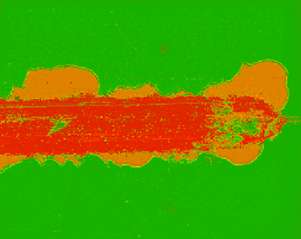Auger Electron Spectroscopy (AES)
Auger electron spectroscopy
Auger electron spectroscopy (AES; pronounced [oʒe] in French) is a common analytical technique used specifically in the study of surfaces and, more generally, in the area of materials science. It is a form of electron spectroscopy that relies on the Auger effect, based on the analysis of energetic electrons emitted from an excited atom after a series of internal relaxation events. The Auger effect was discovered independently by both Lise Meitner and Pierre Auger in the 1920s. Though the discovery was made by Meitner and initially reported in the journal Zeitschrift für Physik in 1922, Auger is credited with the discovery in most of the scientific community. Until the early 1950s Auger transitions were considered nuisance effects by spectroscopists, not containing much relevant material information, but studied so as to explain anomalies in X-ray spectroscopy data. Since 1953 however, AES has become a practical and straightforward characterization technique for probing chemical and compositional surface environments and has found applications in metallurgy, gas-phase chemistry, and throughout the microelectronics industry.
Read more about 'Auger electron spectroscopy' at: WikipediaWikipedia contributors. "Auger electron spectroscopy." Wikipedia, The Free Encyclopedia. Wikipedia, The Free Encyclopedia, Oct. 20, 2025.
Auger electron spectroscopy (AES) is used to determine the elemental composition and, in many cases, the chemical state of the atoms in the surface region of a solid, vacuum stable, not insulating material. AES has found widespread use in an extensive variety of materials applications, especially those requiring surface specificity and high spatial resolution. The method is based on the Auger effect which is resulting from inter- and intrastate transitions of electrons in an excited atom. Because of the relatively low kinetic energy of the Auger electrons they can only escape from the uppermost few monolayers of a specimen surface. This is the reason why this technique is such surface sensitive. In combination with Argon ion sputtering depth profiles to 1000 nm are available without prior sample preparation. In many cases there is no complex and time-consuming sample preparation needed.
See also :
